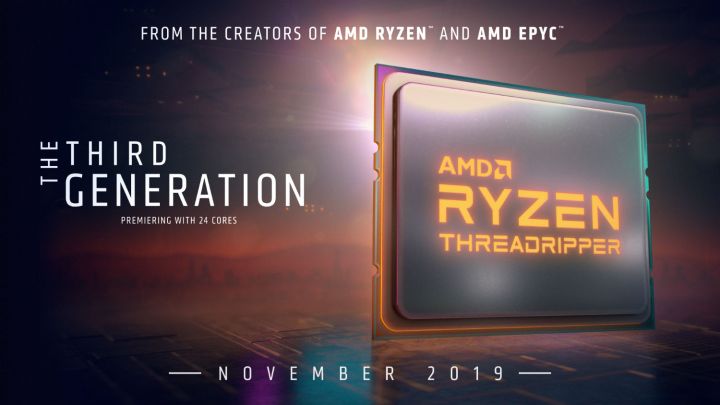
AMD announced Friday that the Threadripper 3000-series will launch in November and released the first official image of the new processor.
With the roll-out of the powerful Ryzen 3000 series of chips, AMD has had a rock star year so far. An update to the ultra high-end Threadripper line of desktop parts was always going to be the cherry on top of the company’s 2019, but AMD’s noted supply issues with 7nm production had cast some doubt that it was going to be ready this year.
“We are focusing on meeting the strong demand for our 3rd generation AMD Ryzen processors in the market and now plan to launch both the AMD Ryzen 9 3950X and initial members of the 3rd Gen AMD Ryzen Threadripper processor family in volume this November,” AMD said in a statement on the launch of 3rd-gen Threadripper.
“We are confident that when enthusiasts get their hands on the world’s first 16-core mainstream desktop processor and our next-generation of high-end desktop processors, the wait will be well worth it,” the company added.
It’s certainly a confident statement, as some estimates were leaning more toward an early 2020 launch. Delays and shortages in TSMC’s 7nm production have caused popular processors like the Ryzen 9 3900X to be difficult to find. A release before the holiday season would be an impressive move by AMD.
The rumors around Threadripper’s primary Intel competitor, Cascade Lake-X, have been heating up too. The high-end desktop chips are reported to launch before 2020 as well, with leaks pointing toward a launch at the tail-end of Q3. Now that we have confirmation that the two insanely powerful chip lines are set to go head-to-head this fall, it’ll make for one of the most exciting and competitive years in the AMD vs. Intel rivalry in recent memory.
Editors' Recommendations
- AMD’s graphics card sales just took a nosedive
- I’ve used Intel CPUs for years. Here’s why I’m finally switching to AMD
- Gigabyte just confirmed AMD’s Ryzen 9000 CPUs
- AMD Zen 5: Everything we know about AMD’s next-gen CPUs
- I’ve reviewed every AMD and Nvidia GPU this generation — here’s how the two companies stack up



